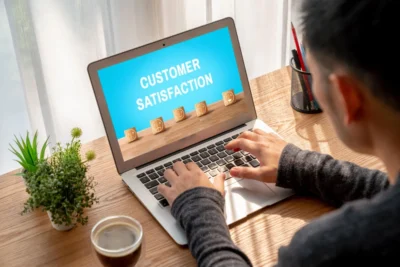Chatbots have revolutionized the way several business organizations engage with their customers online. These AI-powered conversational agents have become indispensable tools for enhancing customer service, streamlining sales processes, and boosting conversion rates. This article delves into tactics that unlock the full potential of chatbot marketing in skyrocketing conversion rates for businesses across various industries.
What Are These
Before delving into tactics, it’s crucial to understand the fundamental role of chatbots in the digital landscape. These are automated programs that simulate human conversation through text or voice interactions. They leverage natural language processing (NLP) and machine learning algorithms to interpret user queries and provide relevant responses in real-time.
Personalized User Experience
One of these bots’ most effective tactics for increasing conversion rates is delivering personalized user experiences. Businesses tailor chatbot interactions to meet individual users’ needs and preferences by leveraging information analytics and multiple user behaviour insights. Personalization fosters a deeper customer connection, enhances engagement, and ultimately drives conversions.
Seamless Integration
Integrating these bots into existing digital platforms is essential for maximizing their impact on conversion rates. Whether it’s embedding chatbots within websites, mobile apps, or social media platforms, seamless integration ensures a frictionless user experience. The chatbot marketing facilitates smoother conversions and reduces drop-off rates by providing instant guidance and assistance throughout the customer journey.
Proactive Engagement
Engaging users actively at strategic touchpoints can significantly influence conversion rates. Chatbots can be programmed to initiate conversations based on user behaviour, such as browsing patterns, cart abandonment, or prolonged inactivity. They can prompt action and drive conversions by reaching out to users with timely offers, product recommendations, or assistance.
Omnichannel Presence
Businesses should deploy across multiple channels and platforms to maximize reach and engagement. Whether it’s website chat widgets, messaging apps, or voice assistants, an omnichannel approach ensures that these are accessible wherever users interact. Consistent messaging and seamless transitions between channels reinforce brand presence and foster trust, ultimately leading to higher conversion rates.
Natural Language Understanding
The ability of these bots to understand and respond to natural language queries is a game-changer for enhancing user experience and driving conversions. Advanced NLP algorithms enable these bots to comprehend context, sentiment, and intent, allowing for more meaningful interactions. Chatbots can effectively address user inquiries and guide them towards conversion by mimicking human conversation patterns and adapting to diverse language nuances.
Interactive Product Recommendations
Chatbots can serve as personalized shopping assistants by offering interactive product recommendations based on user preferences and past interactions. By analyzing purchase history, browsing behaviour, and demographic data, such an AI-powered technology can suggest relevant products or services tailored to each user’s needs. Interactive recommendation engines facilitate informed purchasing decisions and increase cross-selling and upselling opportunities; the chatbot drives conversion rates.
Real-Time Support and Assistance
Timely support and assistance are critical factors influencing user satisfaction and conversion rates. Chatbots respond instantly to customer inquiries, resolve issues, and offer guidance throughout the sales process. These technologies provide 24/7 availability and rapid response times to ensure that users get the assistance they need anytime, leading to higher conversion rates and improved customer satisfaction.
Data-Driven Optimization
Continuous optimization based on data insights is key to unlocking the full potential of chatbots in driving conversions. Businesses can identify bottlenecks, refine messaging strategies, and optimize chatbot workflows by analyzing user interactions, conversion funnels, and performance metrics. Data-driven optimization enables businesses to iteratively improve the effectiveness of chatbots in guiding users towards conversion goals.
Conclusion
In conclusion, chatbots offer a powerful arsenal of tactics for skyrocketing conversion rates and enhancing overall business performance. By delivering personalized user experiences, seamlessly integrating across channels, proactively engaging users, and leveraging advanced capabilities such as natural language understanding and interactive recommendations, businesses can unlock the full potential of these bots in driving conversions. Embracing these proven tactics can propel businesses towards sustained growth, increased revenue, and greater customer satisfaction in the digital age.










